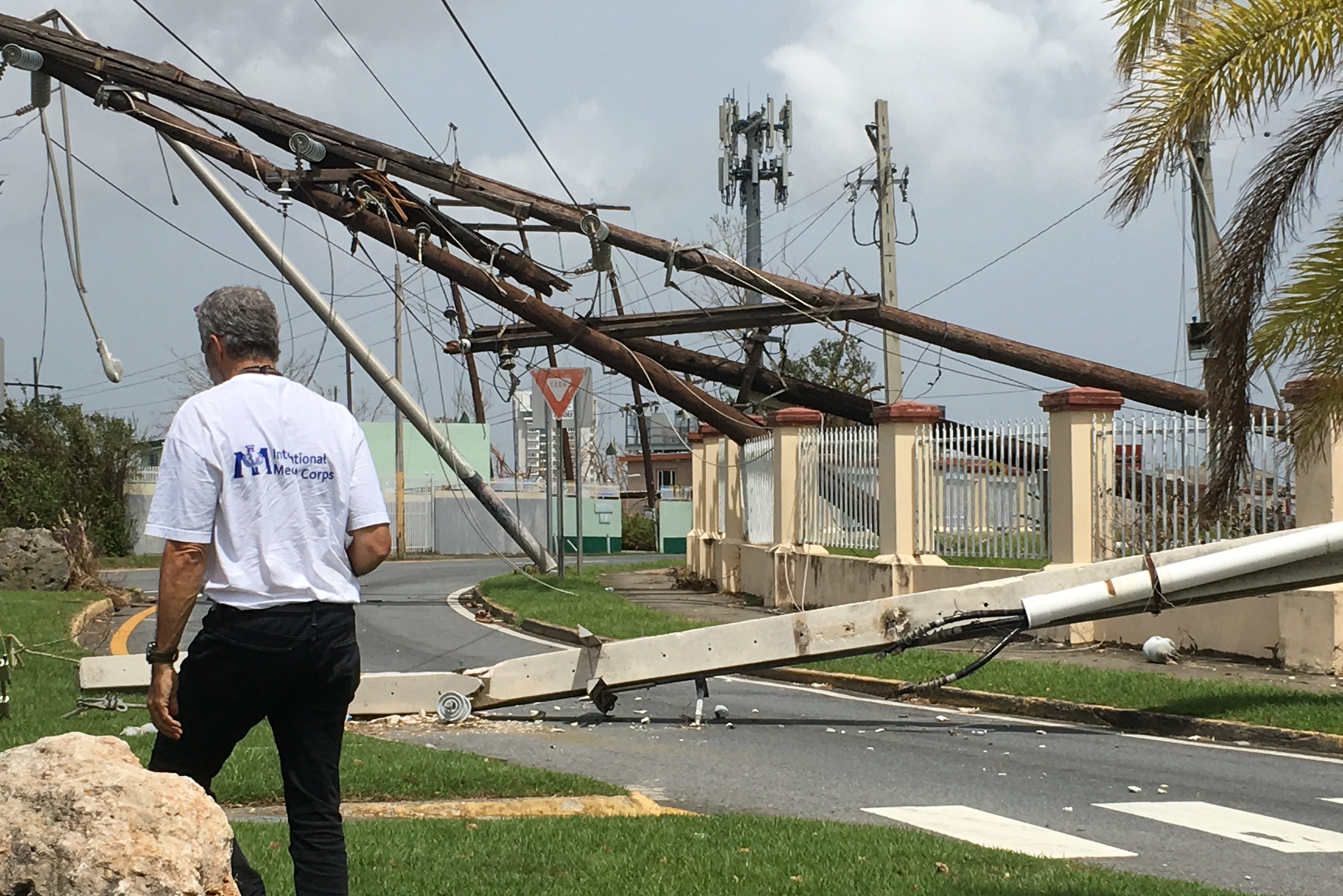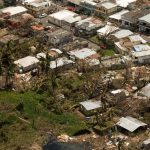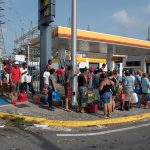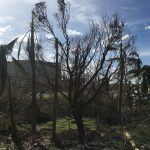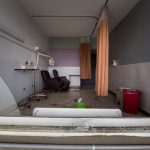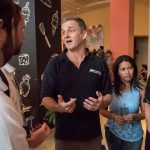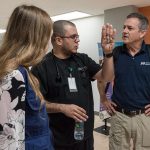Dr. Robert Fuller, department chair and professor of emergency medicine at UConn Health, who just arrived in Puerto Rico to respond to the devastating effects of Hurricane Maria, shares his first-hand account of how every single person in the country is being affected by the magnitude of the hurricane’s impact. Fuller is on a mission with the International Medical Corps to assess the damage to, and identify gaps in, medical infrastructure for delivering care to the poor, and to find and coordinate resources to close that gap.
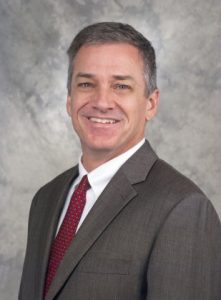
Since touching down in Puerto Rico, how would you describe the state of the country?
Everyone is affected in a serious and ongoing way. It is impossible to see or do anything that is not changed by the storm. For example, getting off the empty plane we flew down on, at the airport there is no electricity or air-conditioning. The usually bustling road that drops people off at the curb had zero cars. No traffic at all. The cab we took from the departing area had arrived at 7 a.m., and we were his first fare for the day at 2 in the afternoon. Most of the main streets are clear but half of the secondary roads still have poles or wires blocking passage. Even with so many roads blocked, traffic is light and moves easily. This city is normally loud and congested with cars, but there is no fuel to be had. At every station we pass, the line is 50 to 100 cars long to get $20 of gas. Most people we ask say they waited four to seven hours for gas. Water is not running in most houses. Food is hard to come by – for example, they will let a few people at a time (20) into a grocery store to spend a set amount of money. Lines for groceries are longer than for gas. Most homes presumably have some canned and stored food, but when that starts to run low, if food is not more available, people will get impatient.
How have you assisted with the humanitarian needs so far and/or plan to?
Upon our arrival, we met with a director/coordinator for primary health centers. We will work with them to do an assessment of their sites with regards to infrastructure and supplies. Unfortunately, there is no communication in most of the country so their assessments are greatly impaired. We can know for sure that they have no power, no water, and at least some structural damage. But the extent is impossible to know without going in person. Getting there in person requires gas – and you know how hard that is. We will meet with this group again tomorrow morning, after having had 24 hours to get more information on their various sites. We will travel to some of those sites tomorrow if and when we secure fuel and a car.
Who have you traveled there with, and what is your team’s goal?
I am traveling with the International Medical Corps. I have worked with them many times before. Our team consists of Carrie Vopelak from IMC in Washington D.C., a monitoring and evaluation expert, Ken Cedeno, a photographer/communications expert, and me. We traveled down on an empty United plane which had an all-volunteer crew. The plane and crew were heading there to fill up with evacuees. That was pretty cool. Great spirit of generosity on the plane plus, since it was empty, I got to catch up on the sleep I lost flying around trying to find a flight into San Juan. Our number one goal is to identify the gaps caused by Maria – the gaps in care provided to poorly resourced patients at primary care centers. Finding solutions to interruptions in the usual supply chain or identifying temporarily infrastructure fixes to get back to providing care, such as finding alternative spaces, seem likely targets for us.
After seeing the situation on the ground, what are your thoughts on the forecast of relief effort needs now and for the future?
If the power infrastructure is back quickly – in weeks not months – that is the most important determination. People need gas for cars to get to school and work, people need diesel for generators until the electricity is back on. People need running water for basic home hygiene needs. Until these basics are covered, it’is hard for people to go back to work and start to rebuild a normal life. People with chronic medical conditions will not be able to pay for their needs without work, will not be able to get to their health care settings, will not be able to access care for an acute problem.
How would you compare Maria’s damage to your other medical missions, and have you seen anything like Puerto Rico’s devastating situation?
This is mild compared to many of the missions I have attended in the past. I say “mild” because there are few reported dead, and the injured are cared for and doing okay. The chronic illnesses will need attention soon, and hopefully we can help the various agencies to get that accomplished. This is severe in its magnitude of impact. Every single person is affected. Every single home is disrupted in a major way. I remember the October storm we had a few years back and we were without power for about a week. I try to imagine what it would be like to be without power or gas or water, with dwindling food in the pantry.
What’s your number one message to the public and leaders in U.S.?
This is an extremely large disaster. Texas, Florida, and Puerto Rico, plus all the islands impacted by hurricanes seem so much. Although giving cash donations does not have the emotional good feeling of giving some stuff like food/clothing/medicines/goods, cash is the most useful item. Money is converted into the exact right item exactly when and where it is needed. It does not take up space or go bad if left unrefrigerated, for example. It can put a team of people to work repairing a roof, it can fill a generator with diesel, it can fill the pharmacy at a community clinic with just the medications they need.
